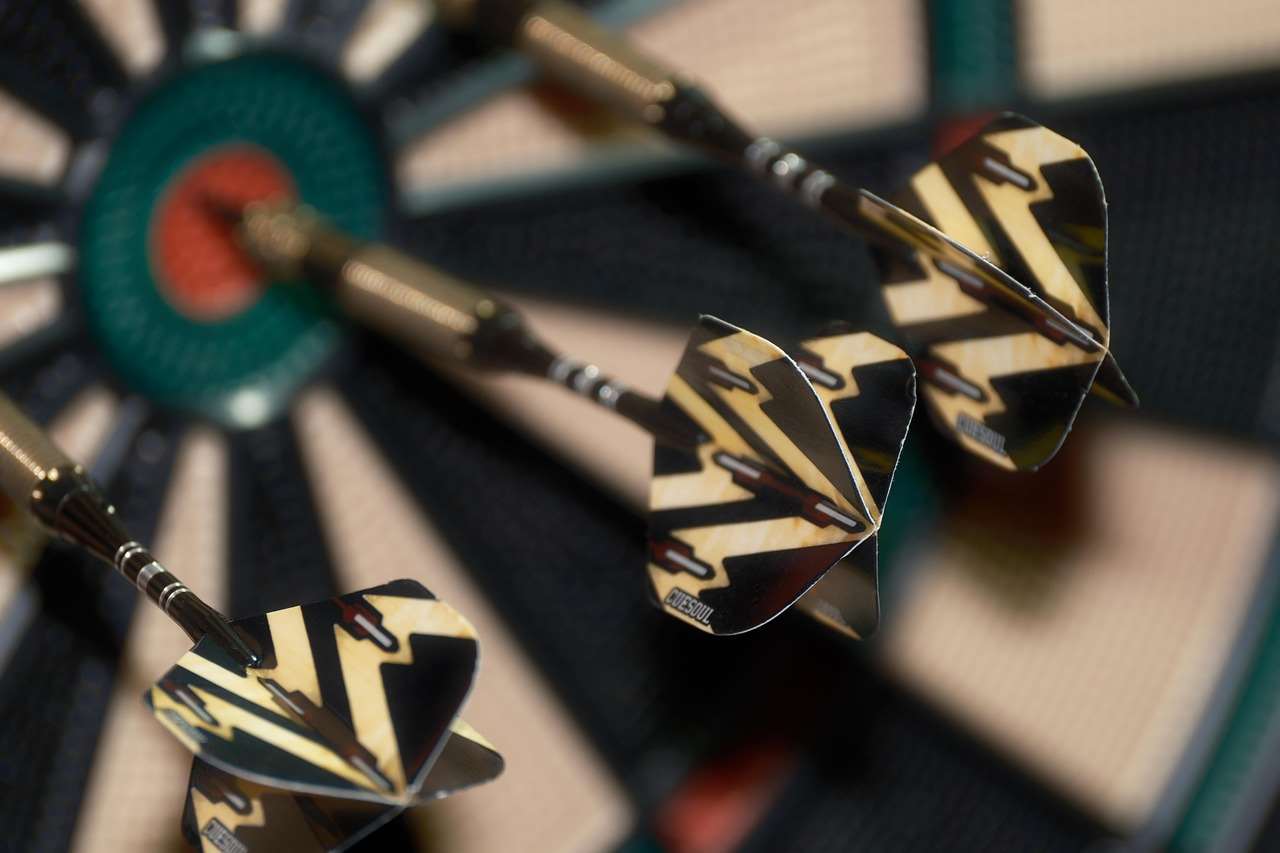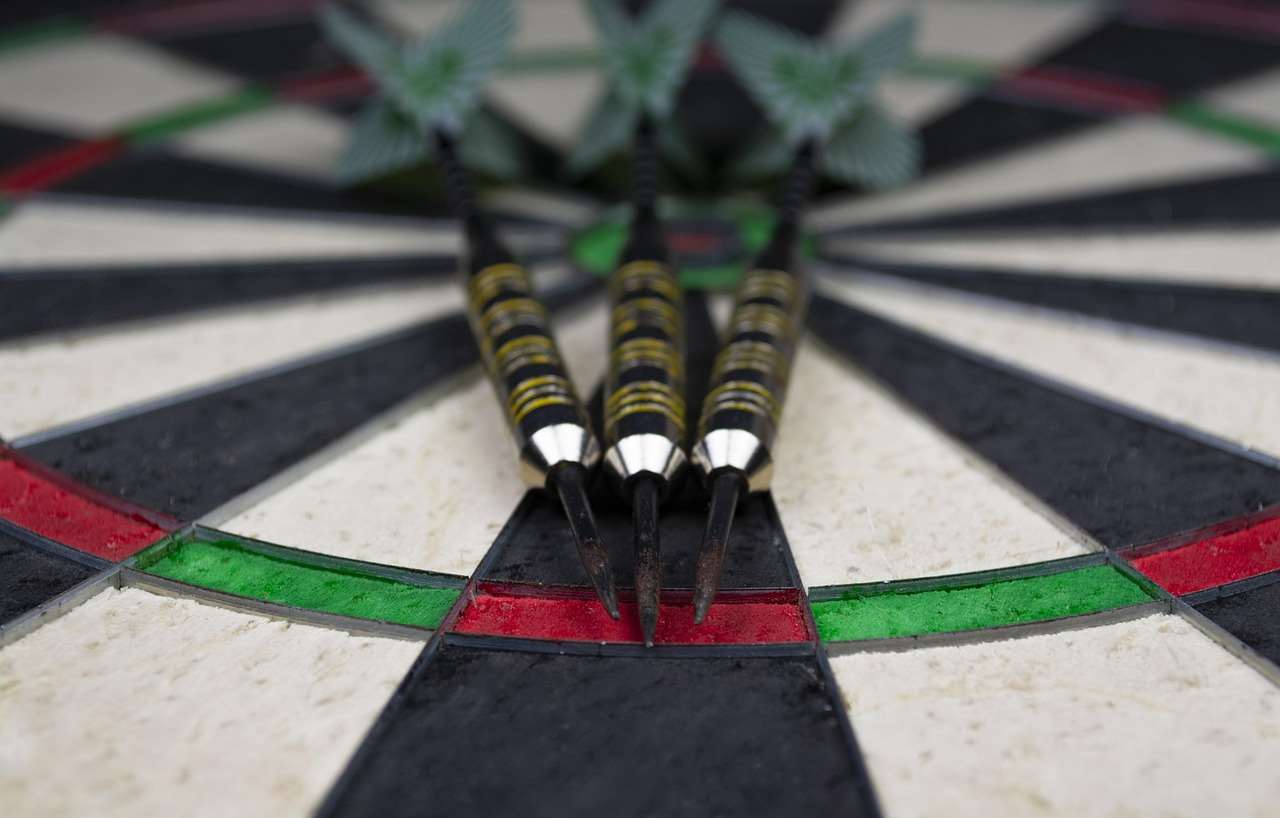Discovering that your darts pointing up consistently can be frustrating, but it’s often a simple fix involving grip, stance, or follow-through; mastering these aspects will dramatically improve your accuracy. This article explores common causes for this issue, offering practical adjustments and drills to refine your technique and achieve a more consistent, level throw.
⚠️ Still Using Pen & Paper (or a Chalkboard)?! ⚠️
Step into the future! The Dart Counter App handles all the scoring, suggests checkouts, and tracks your stats automatically. It's easier than you think!
Try the Smart Dart Counter App FREE!Ready for an upgrade? Click above!
Understanding Why Your Darts Are Pointing Up
The frustrating phenomenon of darts pointing up upon impact with the dartboard is a common issue faced by both beginners and experienced players. It signifies an inconsistency in your throwing motion, typically stemming from one or more contributing factors. Addressing these issues systematically is crucial for improving your overall dart game.

Before diving into specific fixes, it’s important to understand the physics at play. A dart’s trajectory is influenced by the force and angle at which it’s released, as well as the aerodynamics of the dart itself. When darts pointing up is the result, it usually indicates an upward component in the force vector that is too significant relative to the forward momentum. This can lead to a variety of problems including inconsistency, lower scores, and general frustration.
Common Culprits Causing Darts To Point Up
- Grip Issues: A grip that’s too loose or uneven can cause you to unintentionally flick your wrist upwards during the throw.
- Stance Imbalance: An unstable stance can lead to compensating movements, often resulting in an upward push of the dart.
- Follow-Through Problems: A poor follow-through, particularly one that ends with the hand rising too sharply, is a major contributor.
- Release Point Inconsistency: Releasing the dart too late in the throwing motion will often cause it to arc upwards.
Addressing the Grip for Consistent Dart Trajectory
Your grip is the foundation of a consistent throw. Experimenting with different grip styles can help you find one that minimizes unwanted upward movement and keeps your darts pointing up problems at bay.

Finding the Right Grip
- Consistency is Key: Regardless of the grip you choose, maintain a consistent grip pressure and placement on the dart.
- Experimentation: Try different grips (two-finger, three-finger, four-finger) to see which feels most natural and allows for a smooth release.
- Avoid a Death Grip: A grip that’s too tight can lead to tension and unwanted movements. A relaxed but controlled grip is ideal.
- Consider the Dart’s Balance: Adjust your grip based on the center of gravity of your darts. Holding it slightly forward or backward can improve control.
Many players also find that using specialized darts accessories, like grip tape, can improve their hold and reduce slippage that might contribute to inconsistent throws. Anchor Text
Perfecting Your Stance for a Level Throw
Your stance provides the base for your throwing motion. A solid, balanced stance will reduce unnecessary movements and prevent you from unconsciously compensating for instability, which is a common reason why darts pointing up during throws.
Achieving a Balanced Stance
- Foot Placement: Position your lead foot so that it’s pointing directly at the dartboard. The angle of your back foot can be adjusted for comfort and balance.
- Weight Distribution: Maintain a balanced weight distribution between both feet. Avoid leaning too far forward or backward.
- Body Alignment: Keep your body aligned with the board as much as possible. Avoid twisting or bending at the waist.
- Consistency is Paramount: Ensure your feet are consistently placed in the same position each time you approach the oche.
Remember to practice regularly to develop muscle memory and ensure your stance remains consistent. Consider using a Dart Counter App (https://dartcounterapp.com/) to track your progress and identify areas for improvement.
Mastering the Follow-Through to Prevent Darts Pointing Up
The follow-through is arguably the most critical aspect of the throw for preventing darts pointing up. A smooth, controlled follow-through ensures that the dart is released with the correct trajectory and spin.
Developing a Smooth Follow-Through
- Extend Your Arm Fully: Extend your throwing arm fully towards the target after releasing the dart.
- Point Your Fingers: At the end of your follow-through, your fingers should be pointing directly at the target.
- Avoid Jerky Movements: Ensure your follow-through is smooth and fluid, without any sudden stops or changes in direction.
- Maintain a Stable Wrist: Keep your wrist firm and stable during the follow-through. Avoid flicking or bending it upwards.
Many players find that practicing the follow-through in slow motion can help them identify and correct any flaws in their technique. Video recording your throws can also provide valuable feedback. Sometimes, using a darts checkout mat can assist with consistent positioning.
The Release Point and its Impact on Dart Trajectory
The timing of your release is crucial for achieving the desired trajectory. Releasing the dart too early or too late can significantly affect its flight path and is a frequent contributor to darts pointing up. Anchor Text
Optimizing Your Release Point
- Consistency is Key: Strive for a consistent release point in every throw.
- Experimentation: Experiment with slightly earlier or later releases to see what works best for you.
- Visual Cues: Use a visual cue (e.g., a specific point on your arm or hand) to help you time your release consistently.
- Practice Makes Perfect: Practice drills that focus specifically on the release point, such as throwing at a single target.

Using a n01 darts counter can help you track your progress and identify patterns in your release that may be contributing to your inconsistent throws. This allows you to make targeted adjustments to your technique.
Equipment Considerations: Darts and Flights
While technique is paramount, your equipment can also play a role in your dart’s flight. The weight and balance of your darts, as well as the shape and size of your flights, can influence its trajectory and prevent your darts pointing up.
- Dart Weight: Experiment with different dart weights to see which feels most comfortable and controllable for you.
- Dart Balance: Consider the balance point of your darts. Front-weighted darts tend to fly straighter, while rear-weighted darts may be more forgiving of release errors.
- Flight Shape and Size: The shape and size of your flights affect the dart’s stability and drag. Smaller flights tend to be faster and more aerodynamic, while larger flights provide more stability. Anchor Text
Understanding darts flights shapes what’s difference can make a big difference in your game. Choosing the correct setup will enhance your throw and improve your scores.
Drills and Practice Routines to Correct Darts Pointing Up
Consistent practice is essential for improving your dart game. Incorporating specific drills into your routine can help you address the underlying causes of darts pointing up and develop a more consistent, level throw.

Effective Practice Drills
- The Follow-Through Drill: Focus solely on your follow-through, ensuring your arm extends fully and your fingers point at the target.
- The Stance Drill: Practice your stance in front of a mirror to ensure proper alignment and weight distribution.
- The Release Point Drill: Focus on releasing the dart at the same point in every throw, using a visual cue to help you time it consistently.
- The Target Practice Drill: Choose a specific target (e.g., the bullseye or a double) and practice hitting it repeatedly, focusing on maintaining a consistent technique.
Remember to track your progress and make adjustments to your technique as needed. Consider joining a local bullseye darts near me league to get feedback from other players and improve your game.
Exploring options for automatic darts scoring using webcam youtube can also add an element of fun and precision to your practice sessions.
And don’t forget to add some dart songs to create a motivating atmosphere during your practice sessions. Anchor Text Anchor Text
Conclusion: Achieving a Level Throw and Eliminating Darts Pointing Up
Overcoming the issue of darts pointing up requires a systematic approach that addresses your grip, stance, follow-through, and release point. By understanding the underlying causes and implementing the techniques and drills outlined in this article, you can develop a more consistent, level throw and significantly improve your dart game. Remember to be patient, persistent, and always strive for improvement. With dedicated practice, you’ll be hitting your targets with greater accuracy and confidence in no time.
Take action today and start implementing these strategies to refine your throwing technique! Explore further resources online, watch professional dart players, and continue to hone your skills to reach your full potential. Good luck, and happy darting!
Hi, I’m Dieter, and I created Dartcounter (Dartcounterapp.com). My motivation wasn’t being a darts expert – quite the opposite! When I first started playing, I loved the game but found keeping accurate scores and tracking stats difficult and distracting.
I figured I couldn’t be the only one struggling with this. So, I decided to build a solution: an easy-to-use application that everyone, no matter their experience level, could use to manage scoring effortlessly.
My goal for Dartcounter was simple: let the app handle the numbers – the scoring, the averages, the stats, even checkout suggestions – so players could focus purely on their throw and enjoying the game. It began as a way to solve my own beginner’s problem, and I’m thrilled it has grown into a helpful tool for the wider darts community.